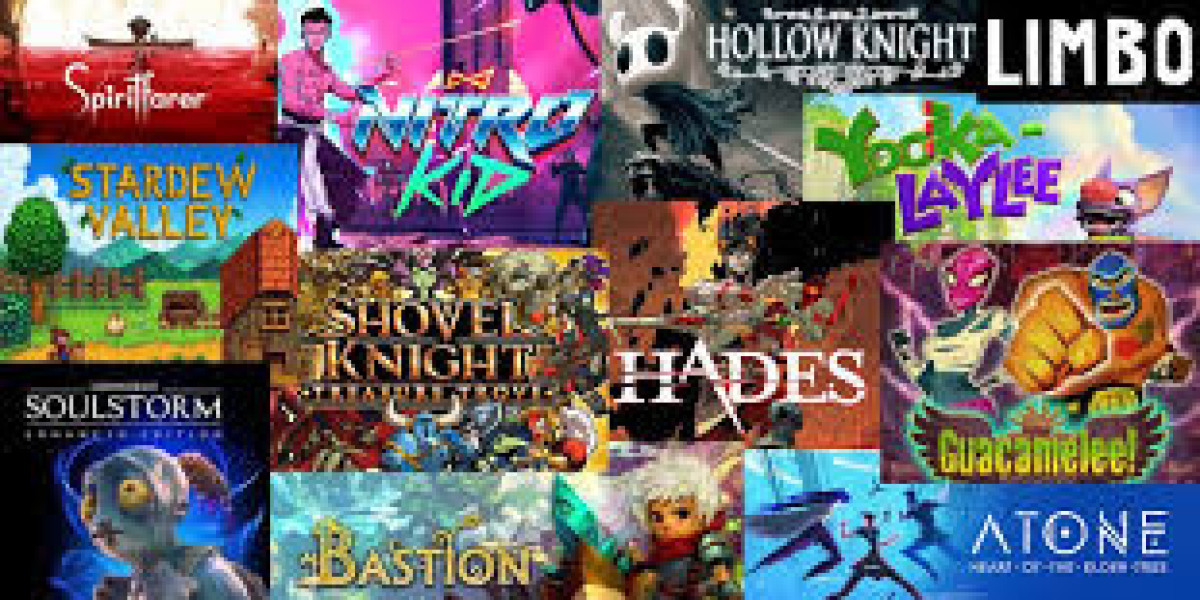The video game industry has long been dominated by major studios, with big-budget titles setting the standard for what gaming could be. However, in the past decade, indie games — those created by independent developers without the backing of a large publisher — have surged in popularity, reshaping the gaming landscape. These games are known for their creativity, innovation, and often personal touch, providing players with unique experiences that mainstream games sometimes lack.
In this blog, we will explore what makes indie games special, how they’ve grown to become a significant force in gaming, and highlight some of the most influential indie titles that have left a lasting impact on players worldwide.
What Are Indie Games?
Indie games are video games created by small teams or individual developers, typically without the financial support of a major game publisher. These developers rely on their own resources or crowdfunding platforms like Kickstarter to bring their games to life. What sets indie games apart is the creative freedom that developers have, allowing them to experiment with unconventional gameplay mechanics, storytelling, and art styles.
Because indie games are not bound by the constraints of big publishers, they often explore niche themes, offer innovative gameplay, and challenge traditional gaming norms. This creative freedom has led to the rise of some of the most original and memorable games in the industry.
The Growth of Indie Games
The indie game movement has been fueled by several factors:
- Digital Distribution Platforms
The rise of digital distribution platforms like Steam, itch.io, and the Epic Games Store has played a crucial role in the growth of indie games. These platforms allow indie developers to publish their games directly to a global audience, bypassing the need for a traditional publisher. In the past, independent developers struggled to get their games onto physical store shelves, but with digital platforms, they can easily reach millions of players. - Crowdfunding and Supportive Communities
Crowdfunding platforms like Kickstarter and Patreon have empowered indie developers by providing a way to raise funds from dedicated fans. Players who are excited about a game concept can financially support its development, allowing the creators to maintain full creative control. This direct connection between developers and players fosters a supportive community that helps indie games thrive. - Game Development Tools
Advances in game development tools like Unity, Unreal Engine, and Godot have made it easier for small teams and even solo developers to create polished, professional-looking games. These tools are more accessible and affordable than ever, enabling indie developers to compete with larger studios in terms of quality and gameplay. - Streaming and Social Media
The rise of game streaming platforms like Twitch and YouTube has also contributed to the growth of indie games. Popular streamers and content creators often showcase indie titles to their audiences, giving these games exposure that they might not otherwise receive. Social media platforms like Twitter and Reddit also provide a space for indie developers to build communities around their games and engage directly with players.
What Makes Indie Games Special?
- Creative Freedom
Indie developers are not bound by the expectations of big publishers, allowing them to take risks and explore new ideas. This creative freedom leads to games that push boundaries, whether through unique art styles, innovative mechanics, or thought-provoking narratives. Games like Journey, with its stunning minimalism, and Papers, Please, with its dystopian bureaucracy simulator, are great examples of how indie games can break away from traditional gaming molds. - Personal Storytelling
Many indie games offer deeply personal or emotional storytelling that resonates with players on a different level than blockbuster titles. Games like Celeste, which explores themes of mental health and self-discovery, and Night in the Woods, which delves into issues of identity and community, show how indie games can use narrative as a powerful tool for connection. - Innovative Gameplay
Indie games are often known for introducing innovative and experimental gameplay mechanics. For example, Braid redefined time manipulation in platformers, while Undertale gave players the option to engage in pacifist or aggressive playstyles, directly affecting the story’s outcome. These types of innovations create fresh, unpredictable experiences for gamers. - Artistic Expression
Indie games are often celebrated for their unique and artistic visual styles. While big-budget titles tend to focus on hyper-realistic graphics, indie games embrace a wide variety of artistic choices, from pixel art and hand-drawn animation to minimalist and abstract designs. Games like Hollow Knight and Gris are prime examples of indie games that are as much art as they are interactive experiences. - Accessibility and Price
Indie games are generally more affordable than AAA titles, often costing a fraction of the price while delivering just as much, if not more, value. Their accessibility in terms of price makes them appealing to a broader audience, and many indie games are also designed with simple controls or mechanics that make them easy for anyone to pick up and play.
Notable Indie Games That Changed the Industry
- Undertale
Released in 2015, Undertale became an indie sensation thanks to its quirky characters, unconventional combat system, and emotional story. The game allows players to choose whether to fight or befriend enemies, and these choices impact the narrative, leading to multiple possible endings. Its innovative approach to storytelling and morality has influenced countless games since its release. - Hollow Knight
Hollow Knight is a beautifully crafted metroidvania-style game that captivated players with its hand-drawn art, intricate world design, and challenging gameplay. Released by the small team at Team Cherry, it has become one of the most beloved indie titles in recent years, praised for its deep lore and atmospheric world. - Celeste
Celeste is a platformer that explores mental health through its narrative while offering challenging, precision-based gameplay. The game’s tight controls and emotionally resonant story have made it a critical and commercial success, earning praise from players and developers alike for its honest portrayal of personal struggles. - Journey
Journey is an indie game that transformed the gaming experience by focusing on emotional connection and exploration rather than traditional gameplay mechanics. Players embark on a wordless pilgrimage through stunning landscapes, meeting other players along the way. The game’s focus on atmosphere and shared experiences has made it a landmark in indie game development. - Stardew Valley
Created by a single developer, Stardew Valley is a farming simulation game that has become one of the most successful indie games of all time. Its relaxing gameplay, charming graphics, and open-ended mechanics allow players to farm, fish, build relationships, and explore at their own pace. It has inspired a new wave of cozy, relaxing indie games.
The Future of Indie Games
The future of indie games looks bright, with new talent and ideas constantly emerging. As game development tools become more accessible, the barrier to entry for aspiring indie developers continues to lower. This opens the door for more diverse voices and unique perspectives in gaming, leading to a more inclusive and creative industry.
Additionally, indie games are gaining more recognition in the mainstream gaming community, with indie titles now featured prominently at major gaming events and award shows. The success of indie games like Hades, which was nominated for multiple Game of the Year awards in 2020, shows that indie games are not only here to stay but are competing at the highest levels of the industry.
Conclusion
Indie games have revolutionized the gaming industry by offering innovative, creative, and personal experiences that big-budget titles often can’t replicate. With the rise of digital distribution, crowdfunding, and accessible development tools, indie developers have found ways to bring their visions to life and connect with players in profound ways. As indie games continue to evolve, they will undoubtedly remain a vital and inspiring part of the gaming world, pushing boundaries and offering fresh perspectives for years to come.








